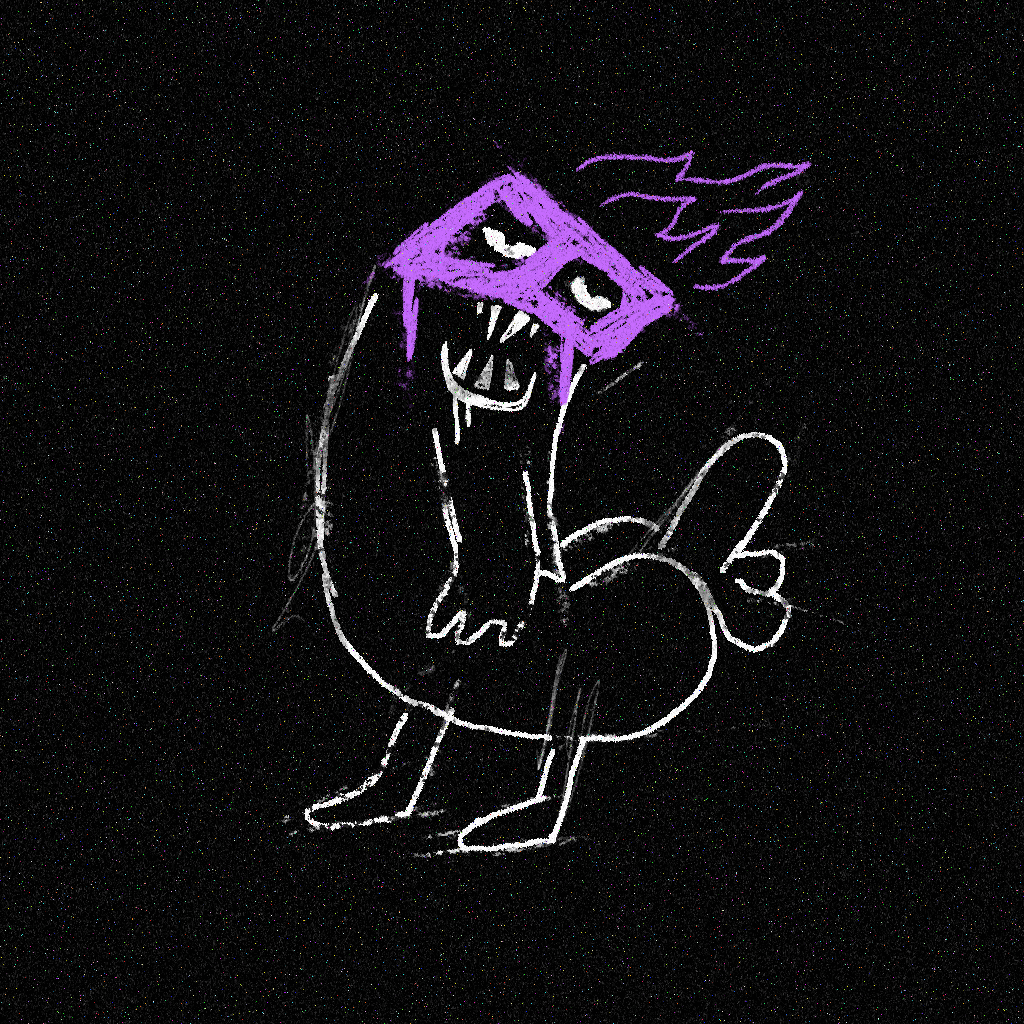FEATURED Collections: character, culture, and code
Welcome to Featured on Electric Chronicles, where we celebrate seminal collections on the Tezos Blockchain. Here, we highlight distinctive narratives and innovative creative practices, inviting you to explore new and foundational works.
For this third installment of Featured, we turn our attention to the art of character. Character projects have become a cornerstone of the web3 space and beyond the hype, the format offers a playful canvas for artistic and quirky expression. This piece examines three distinct Tezos collections – Tezzardz, Dickrbuttz, and FRATZE – that together illustrate a spectrum of approaches to digital ‘identities’ through playful (arche)types, cultural remixes, meme symbolism, comic culture, and abstracted forms.
Faces of the chain: character, culture, and code on Tezos
While they all adopt the familiar square format of a digital avatar, the three highlighted collections are quite different in their intent and execution. They don’t fit your average ‘PFP’ label (where Dickrbuttz doesn’t even identify as PFP-project) and seem to see the repetitive character format more as a fertile ground for generative creation, community commentary, and a perhaps comical artistic inquiry.
Tezzardz #2583 / Tezzardz #600 / Tezzardz #2806 / Tezzardz #2907
Tezzardz
Created by George Goodwin (@omgidrawedit), Tezzardz is an iconic character and the most recognizable PFP collection on Tezos with a total volume of 2.15m ꜩ. Launched in August 2021, the collection consists of 4,200 "programmatically, randomly generated snazzy little fukrs," as the artist ‘jokingly’ describes them.
Each Tezzard is a unique lizard figure, brought to life through a generative algorithm that combines a wide array of traits. These include different backgrounds, body types, headwear, and accessories, with some rare editions rendered as animated GIFs. The aesthetic is a vibrant nod to retro video game culture, imbued with a distinct charm and playfulness.
Tezzardz success seems to lie not only in its visual appeal but in how it uses algorithmic rarity and trait combinations to create a sense of individuality and collectibility. Each piece is both a part of a coherent whole and a one-of-a-kind digital identity – having a foundational model for character creation, and therefore worldbuilding. The way the community talks about acquiring a Tezzard says enough:
“After a wild pursuit involving multiple faceplants, questionable negotiation tactics, and a minor tail casualty (RIP tip), I’m thrilled to announce I’ve officially adopted Tezzardz #2712. He’s spicy, stylish, and definitely judging your Tez collecting.” – @Jd1Sears (John Sears)
In June 2025, a Tezzard was commemorated on New York City’s iconic NFT wall, created by MASNAH.
Dickrbuttz
If Tezzardz is a somewhat polished archetype, Dickrbuttz is its chaotic, self-aware echo. The collection - made by Darkfarms - proudly announces itself as "Not affiliated with Tezzards or with CryptoDickbutts. Just a poorly made mashup for tez fam." This disclaimer is central to its identity, with individual Dickrbuttz also referencing other artist styles and cultural references like Zancan, Sutu, Ottez, Nyan Cat and more. Dickrbuttz is an act of cultural remixing, a quintessentially digital phenomenon where existing art is reinterpreted to create something new and ‘counter’.
DICKRBUTTZ #2 / DICKRBUTTS #93 / DICKRBUTTS #7 / DICKRBUTTS #87
Because, the collection actually does merge the visual language of Tezzardz with that of CryptoDickbutts (another infamous NFT collection). The result is a raw, crude, and humorous series of characters that function as an inside joke for the Tezos community. By deliberately adopting a "poorly made" aesthetic, the project sidesteps conventional standards of quality and instead celebrates the irreverent, participatory nature of internet culture.
Interestingly, the project rejects the ‘PFP-project’ label. This stance is telling: a Dickrbuttz is less a profile picture and more a cultural badge, signifying an owner’s fluency in the lore and humor of the web3 space. It is identity forged not from polished aesthetics, but from shared context and participation in meme culture.
DICKRBUTTS #24 - owned by Batz
FRATZE
On the opposite end of the spectrum lies FRATZE by Kim Asendorf, an artist known for his rigorous and conceptual approach to generative art. Where Tezzardz and Dickrbuttz embrace color and internet/NFT cultural references, FRATZE strips the character down to its most essential elements. The name itself – German for ‘grimace’ or ‘grotesque face’ – signals a dual investigation into a playful avatar and an exploration of form itself.
FRATZE 17ea566bd60 / FRATZE 17ea56fe004 / FRATZE 17ea5916584 / FRATZE 17e77913704
This collection features a series of stark, black-and-white PNGs with transparent backgrounds, created with a custom software painter application. Each piece is a face, but one distilled into an abstract arrangement of lines, shapes, and textures. The monochrome palette and focus on pure form give the works a visceral, almost primal quality. Asendorf leverages the constraints of the PFP format to conduct a formalist inquiry into digital mark-making and the representation of the face.
FRATZE is not about creating a relatable character but about questioning what a digital portrait can be. It’s a sophisticated counterpoint to the trait-driven generative model, offering identity as an abstract, artistic statement rather than a collection of attributes – and it’s one that is very difficult to acquire.
FRATZE 17e79e45899 - owned by blockbird
A spectrum of digital selves
Viewed together, Tezzardz, Dickrbuttz, and FRATZE reveal a remarkable versatility of the character format in blockchain art. You could say they represent three distinct pillars of digital identity:
The Archetype (Tezzardz): A well-defined, algorithmically generated character that establishes a visual world and a system of rarity.
The Remix (Dickrbuttz): A culturally-aware commentary that uses appropriation and humor to build community and shared meaning.
The Abstraction (FRATZE): A formalist exploration that reduces the character to its core visual components, transforming the PFP into a canvas for pure artistic expression.
These collections demonstrate that a simple square canvas can be a launchpad for playfulness, community-building, cultural critique and reappropriation, some mischievousness, and a more serious artistic plus stylistic investigation.

















